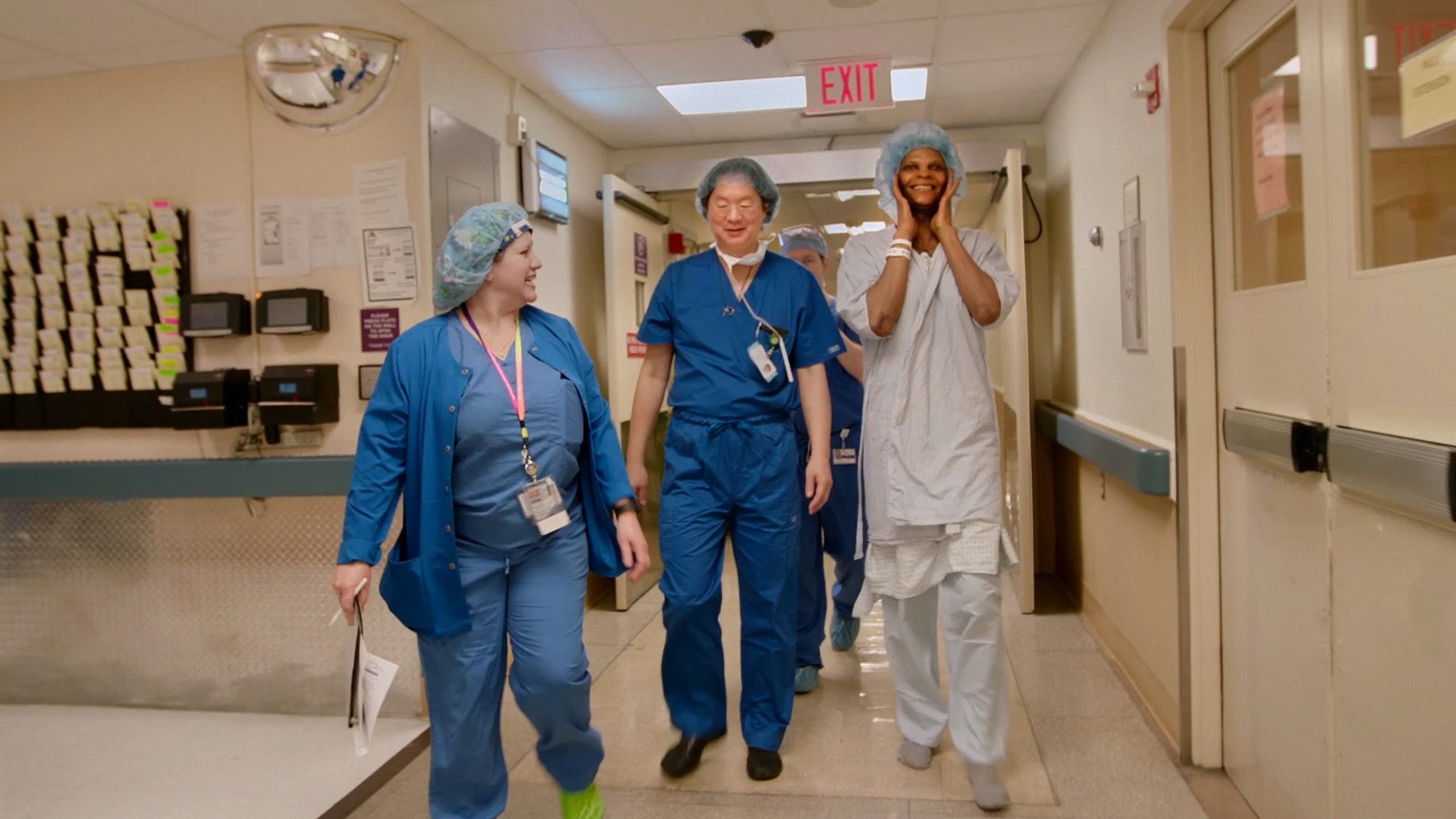Film Review by Keerthi Gondy, B.S., a fourth-year medical student at the University of Michigan Medical School, Ann Arbor, Mi.
Born to Be is Tania Cypriano’s remarkably moving documentary about New York’s Mount Sinai Center for Transgender Medicine and Surgery, where for the first time, transgender patients have access to transition-related health and surgical care. The film follows the work of Dr. Jess Ting, a renowned plastic surgeon, who works with transgender and non-binary patients providing everything from facial reconstruction to vaginoplasty.

In 2015, New York passed a law mandating that health insurance companies provide coverage for medically necessary gender-affirming treatments for transgender patients. It was a groundbreaking moment in LGBTQ+ history given the generational stigma and discrimination transgender individuals face with regards to accessing quality care, receiving hormone therapy or surgery.1 A year after the law was passed, Mount Sinai created the center and Dr. Ting was approached to become its director. Prior to this, Dr. Ting, who previously specialized in breast reconstruction, admitted that he had not interacted with a transgender patient before or knew what ‘being transgender’ really meant.
The documentary beautifully captures the emotional and physical journey of patients as they become the person they have always wanted to be. The film begins with Mahogany, previously a renowned male model, who is one of Dr. Ting’s first patients to receive an innovative facial feminization procedure to flatten the contour of her masculine-appearing forehead. She shares her struggle with experiencing gender dysphoria in the fashion industry and the hard decision to quit her successful job to live as a woman. We also see Garnet Rubio, formerly known as Devin, a 22-year-old aspiring female model who undergoes a vaginoplasty, a procedure that Dr. Ting performs to alleviate vaginal dryness. And finally, there is Jordan, who after years of battling depression and suicidal ideation, can finally envision a “future for himself” after receiving a radical phalloplasty created almost entirely out of tissue extracted from his left forearm.
In medicine, patient outcomes are often measured in quantifiable values, a percentage decrease in HbA1c in diabetic patients, or a reduction in blood pressure in millimeters in hypertensive patients. Yet, Dr. Ting and his team remind us of another important, but sometimes overlooked, outcome- namely how a patient feels. During her long-awaited consultation with Dr. Ting discussing her vaginoplasty, Garnet broke into tears while describing her feelings, “This is the happiest I’ve been in my entire life.” How we feel about ourselves is inextricably tied to how we look or how we are perceived by others. Garnet embodies the feelings of transgender individuals; when a transgender patient lives in a body that truly reflects their inner identity, it is one step closer to living a more fulfilling version of themselves. As he eases patients’ fears and anxieties, Dr. Ting is as much a healer as he is a surgeon.
In parallel to the transformative work performed in Dr Ting’s clinic, the film notably details the grim reality of what it means to live as trans in America. The transgender community has the highest suicide rate in the United States with 22% to 43% of individuals having attempted suicide at least once in their lifetime.2 While transitional surgery may help improve patients’ identities and self-esteem, it is not a complete solution, especially for those with underlying mental health disorders. A follow-up study, extending over 30 years, demonstrated that transgender individuals who had completed their gender-affirming surgery still had higher risks for mortality and suicidal behavior.3 Such was the case with Garnet, who after completing her vaginoplasty and facial feminization procedures, attempted suicide after a traumatic breakup with a man. We see how Dr. Ting is moved by her suicide attempt and quietly reflects, “I feel terrible, but even surgery can’t heal wounds that remain from years of neglect and bigotry.”
Born to Be also illustrates the compelling need to provide transgender care in America; patients wait nearly six months to consult with Dr. Ting and there are over 400 patients on the waiting list. While more healthcare practitioners are needed to improve timely access to gender-affirming care4, there are not enough specialists in this field.5 Towards the end of the film, viewers are given a glimmer of hope as the clinic has expanded its number of employees and created the nation’s first plastic surgery fellowship in transgender medicine.
Born to Be distinguishes itself from other documentaries exploring transgender issues by portraying the thoughtful and compassionate approach that Dr. Ting and his staff show towards their patients. Through these diverse stories, the film explores a profound theme that relates to all of us: what it means to be alive and how closely that is tied to consciously embracing one’s identity. The film humanely captures the lives, hopes, and fears of a community that has long been marginalized.
References
- Safer, J. D., Coleman, E., Feldman, J., Garofalo, R., Hembree, W., Radix, A., & Sevelius, J. (2016). Barriers to healthcare for transgender individuals. Current Opinion in Endocrinology & Diabetes and Obesity, 23(2), 168–171. doi: 10.1097/med.0000000000000227
- Bauer, G., Schiem, A., Travers, R. & Hammond, R. (2015). Intervenable factors associated with suicide risk in transgender persons: A respondent driven suicide risk sampling study in Ontario, Canada. BMC Public Health. doi: 10.1186/s12889-015-1867-
- Dhejne C, Lichtenstein P, Boman M, Johansson ALV, Långström N, et al. (2011). Long-Term Follow-Up of Transsexual Persons Undergoing Sex Reassignment Surgery: Cohort Study in Sweden. PLOS ONE, 6(2). https://doi.org/10.1371/journal.pone.0016885
- Veale, J., Saewyc, E., Frohard-Dourlent, H., Dobson, S., Clark, B. & the Canadian Trans Youth Health Survey Research Group. (2015). Being safe, being me: Results of the Canadian trans youth health survey. Vancouver, BC: Stigma and Resilience Among Vulnerable Youth Centre, School of Nursing, University of British Columbia. Retrieved from https://saravyc.sites.olt.ubc.ca/files/2015/05/SARAVYC_Trans-Youth-Health-Report_EN_Final_ Web2.pdf
- Korpaisarn, S., Safer, J.D. Gaps in transgender medical education among healthcare providers: A major barrier to care for transgender persons. (2018). Reviews in Endocrine and Metabolic Disorders, 19, 271–275. https://doi.org/10.1007/s11154-018-9452-5